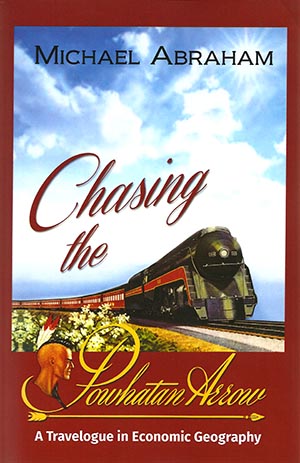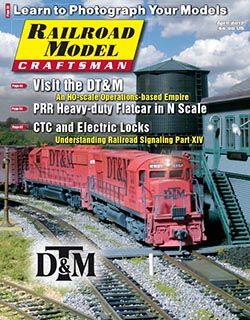 Review by George Riley
Review by George Riley
Michael Abraham’s latest travelogue, Chasing the Powhatan Arrow, does not follow the normal course of a book about railroads. These usually feature the nuts and bolts of motive power, rolling stock and right of ways. Mr. Abraham approaches his subject from the viewpoint of presenting an economic geographic assessment of the region between Norfolk, Va., and Cincinnati, Ohio. The Norfolk & Western Railroad defines the nexus for this diverse region. The Powhatan Arrow powered by the streamlined J locomotive provides the herald for the line as well as the region tying his tale together into a cohesive and entertaining format.
The Norfolk & Western (N&W) was the result of the consolidation of three Virginia railways following the Civil War under the leadership of William Mahone. The turbulent post war years led the line into receivership in the 1870s only to be reorganized in the 1880s. By the turn of the twentieth century the line was engaged in providing fuel for the nation in the form of Pocahontas and West Virginia Coal sent both eastward to the port of Norfolk and westbound to the manufacturing heartland of Ohio. More than just another railroad line, the N&W was a major employer that tied the region together culturally and economically even though it never served any major population centers. Due to this there has always been a regional affection for the line that is not usually given to many corporations. For many readers the term, economic geography may lack clear meaning, so as follows is a definition provided by Wikipedia: Economic geography is the study of the location, distribution and spatial organization of economic activities across the world. It represents a traditional sub-field of the discipline of geography.
In order to describe the many diverse economic and cultural regions author Abraham has laid out the book following the west bound timetable of the Powhatan Arrow traveling from Virginia’s Tidewater region at Norfolk through the Commonwealth of Virginia into the dormant coalfields of West Virginia ending at Cincinnati’s iconic Union Terminal. Every stop along the route is punctuated with interviews of both leaders and the ordinary citizens of the area. Intertwined with these personal vignettes is the history and industries at each local along the way.
The common thread running through out Chasing the Powhatan Arrow is one of change. Leading off with the changes of fortune is the port city of Norfolk, both economically and geologically, the tale continues through the agricultural region of South Side Virginia famous for peanuts and tobacco, eventually reaching Petersburg where the last major actions of the War Between the States culminated at Appomattox Court House. From Appomattox the line crosses the piedmont region of Virginia into the city of Lynchburg, which lies at the foothills of the Appalachians. First a transportation hub, then a market and manufacturing center the city now survives on a service and technology economy.
After cresting the Blue Ridge grade the journey continues into Roanoke, which once was the corporate headquarters and central shops for the railroad. While the shops continue to provide maintenance to the line as well as continued construction of rolling stock, the headquarters have moved to Norfolk with the consolidation of the N&W and Southern Railways into the Norfolk Southern. From Roanoke the line ascends the Alleghenies to Christiansburg and the junction at Radford where the westbound line diverges from the route to Bristol and heads into the coal country of Southwest Virginia and southern West Virginia. The trail through West Virginia is a heart wrenching vision of economic failure whose fortunes have been tightly tied to the declining coal industry. Industrial and business flight from the region has left the area with declining population and opportunity. Some counties have become virtual ghost towns due to these factors.
Once across the Ohio River the journey heads towards Cincinnati along the pea vine, formerly a three-foot narrow gauge line standard gauged by the N&W, through the river towns in Southern Ohio. They too have felt the impact of economic change but are fighting to make a comeback as they try to attract new businesses and manufacturing opportunities. The tale ends in Cincinnati, Ohio, the largest city on the Norfolk and Western. Cincinnati was and still is a crossroads for industry and transportation. By virtue of its size, resources and leadership the city has weathered the vicissitudes of change remarkably well even though it still faces daily challenges.
This resulting travelogue fills out the details of this richly diverse and interesting area of the United States from an unusual perspective. While some of the specific details may be in question, the overall observations and conclusions are not. Chasing the Powhatan Arrow clearly illustrates the impact that transportation and regional economies have on one another as well as the citizens of each location. One should find Michael Abraham’s book an interesting, although not truly railroad specific, read and hopefully a catalyst for a visit to any one of the area’s historic and interesting sites.
Chasing the Powhatan Arrow
by Michael Abraham
Pocahontas Press
304 Royal Lane
Blacksburg, VA 24060
540-392-1119
 This review appeared in the April 2017 issue of Railroad Model Craftsman
This review appeared in the April 2017 issue of Railroad Model Craftsman


